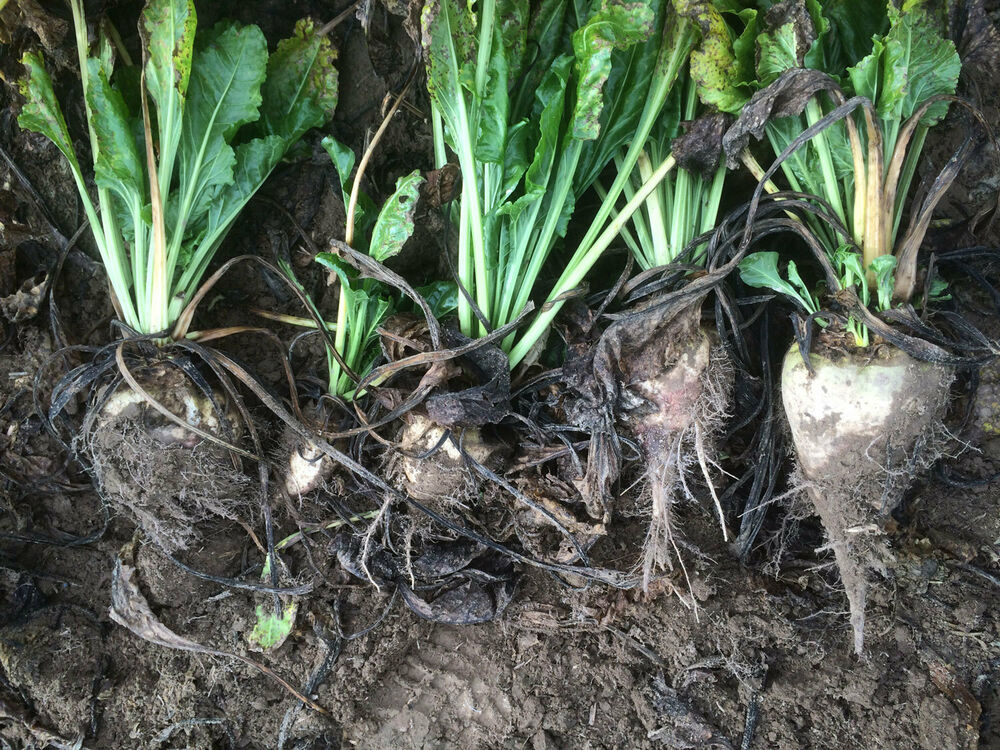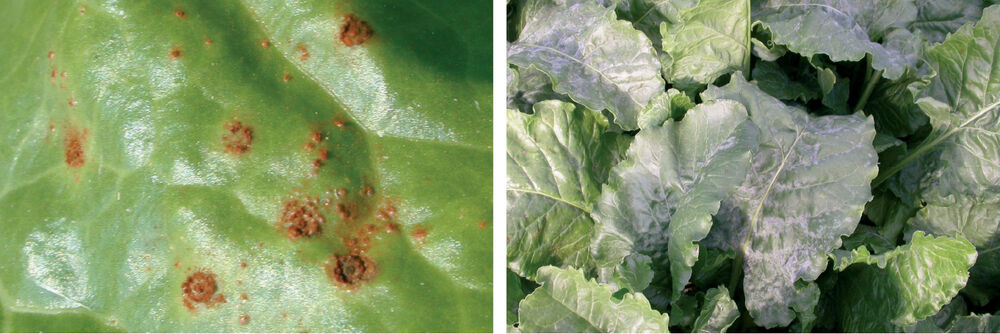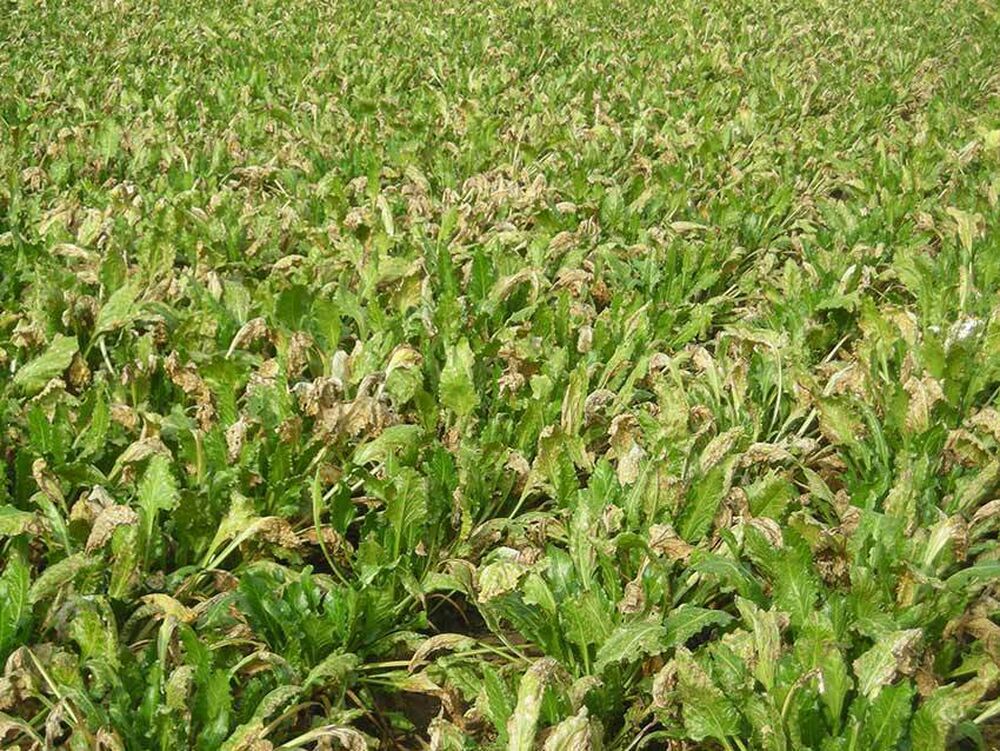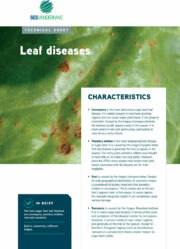Leaf diseases are a group of various diseases in sugar beet that are caused by fungi that attack sugar beet leaves.
Four of the most common leaf diseases are:
- Cercospora leaf spot
- powdery mildew
- rust
- Ramularia leaf spot
The symptoms of these leaf diseases generally can be observed during summer until harvest. At the beginning of summer, Cercospora leaf spot and powdery mildew are usually the first to appear, followed by Ramularia leaf spot and rust.
CERCOSPORA LEAF SPOT
What are the symptoms of cercospora?
Cercospora leaf spot (Cercospora beticola) is characterised by grey spots on the leaves with a red or brown edge and numerous tiny black specks. In the case of severe infection, these lesions may merge, leading to complete leaf desiccation. The plant often responds by producing new leaf growth
In Europe, Cercospora leaf spot is the most damaging leaf disease in sugar beet. It spreads quickly and requires close monitoring and timely phytosanitary treatment. It is the only leaf disease where treatment as late as six weeks before harvest can still be economically viable.
How is Cercospora spread?
The fungus thrives in warm, wet conditions. Therefore, infections are more common and more damaging during hot, stormy summers, particularly in Southern and Central Europe and the Balkans. In recent years, the disease has become more widespread in other parts of Europe, although it is not yet present everywhere.
In addition to rain and wind, insects can also help spread the disease.

RUST AND POWDERY MILDEW
What are the symptoms of rust?
Rust (Uromyces betae) is identified by the appearance of red-orange pustules on sugar beet leaves. In general, rust causes less damage compared to other leaf diseases.
What are the symptoms of powdery mildew?
Powdery mildew (Erysiphe betae) is easy to identify by the white, powdery coating on the upper surface of leaves. Under high disease pressure, powdery mildew can cause significant losses.
How are rust and powdery mildew spread?
Both diseases are spread by rain and wind.
Rust typically develops in relatively cool conditions, although it can also tolerate warmer temperatures. Prolonged wet weather is a key factor for its development.
Powdery mildew, on the other hand, thrives in relatively high temperatures and can develop under dry conditions with rising humidity. Alternating wet and dry conditions (e.g. morning dew) strongly promote its spread.

RAMULARIA LEAF SPOT
What are the symptoms of Ramularia leaf spot?
Ramularia leaf spot (Ramularia betae) is a leaf disease with symptoms similar to cercospora leaf spot: it causes white lesions with a brown edge, often containing many tiny white specks (compared to the red/brown lesions with black specks seen in Cercospora). Ramularia mainly affects sugar content.
How is ramularia spread?
Ramularia is found throughout Europe, but it is now less frequent in many regions than in the past. The fungus responsible for the disease favours relatively cool and rainy summer weather and is spread by rain and wind.

How to control leaf diseases such as cercospora, rust, powdery mildew and ramularia?
1. Agronomic measures
- Avoid short crop rotations
- Avoid excessive use of nitrogen fertilisers
- Avoid no-till farming techniques
- Good management of the crop residues in storage areas, which can act as ‘reservoirs’ for fungal spores
- When possible, select sugar beet varieties that are less susceptible to leaf diseases
2. Crop protection
In some regions, an industry-wide monitoring network reports the presence of leaf diseases. When a disease is confirmed in your area, it is crucial to inspect your fields for signs of infection.
If symptoms are present, growers should confirm whether the intervention threshold has been reached before applying fungicides. It's also important to rotate active ingredients and to avoid applying fungicides too late in the season.

